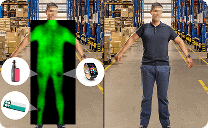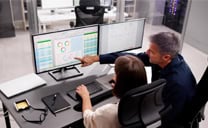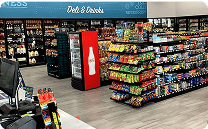In This article
The AI camera is transforming the way businesses approach surveillance and operational visibility. Unlike traditional cameras that record video for later review, AI cameras process footage in real time using built-in algorithms to identify people, objects, behaviors, or environmental changes. This enables intelligent monitoring, supports faster responses, reduces false alarms, and provides deeper insights into on-site activities.
Artificial intelligence within these cameras typically includes computer vision, pattern recognition, and behavioral analysis elements. Instead of relying on human operators to interpret video, the camera can identify events worth flagging, such as unauthorized access, loitering, customer wait times, or safety violations.
How an AI Camera Works
An AI camera contains onboard processors connected to cloud-based platforms that apply machine learning models to the video stream. These models are trained to recognize specific elements within a scene, such as:
- Human presence or absence
- Object movement or tracking
- Unusual patterns of motion or crowd formation
- License plates or facial features
- Dwell time or zone-based behavior
Once an event is detected, the camera can trigger predefined actions, such as sending an alert to a device or activating other devices, such as alarms or lights.
AI cameras can also support continuous learning, adapting their pattern recognition capabilities over time based on feedback or changing conditions.
Use Cases Across Industries
AI cameras are deployed across various industries where real-time intelligence can make a measurable impact. Common applications include:
- Retail: Monitoring customer flow, queue lengths, or shoplifting behavior
- Quick-service restaurants (QSRs): Tracking order prep times or cleanliness compliance
- Logistics and warehousing: Verifying package movement, forklift operation, or restricted area access
- Healthcare: Monitoring patient rooms or medication storage for compliance and safety
- Corporate offices and education: Detecting unauthorized access or after-hours activity
AI cameras help businesses operate with greater awareness and agility by automatically identifying patterns that would otherwise go unnoticed or require manual review.
Benefits of AI Cameras
AI-enhanced surveillance offers several benefits over traditional video systems:
- Automated detection and alerting, reducing reliance on manual monitoring
- Reduced false alarms, with smarter distinction between threats and everyday activity
- Enhanced safety and compliance monitoring, particularly in regulated environments
- Operational insight, such as identifying inefficiencies or peak activity zones
- Real-time verification, helping teams respond immediately to critical events
Because AI cameras work continuously and consistently, they help ensure no key detail is overlooked.
Considerations When Using AI Cameras
When adopting AI camera systems, you should consider:
- Privacy and data regulations, especially when using facial recognition or biometric data
- Integration capabilities with existing systems like POS, access control, or alarms
- Network and storage requirements, as AI features increase, bandwidth and processing needs
- Training and configuration, to accurately align AI models with the business’s goals and environment
Working with a trusted provider ensures the system operates reliably and ethically.
AI Cameras and DTiQ
DTiQ combines the capabilities of AI cameras with centralized analytics to provide you with more than just video. VIDEOiQ offers intelligent video solutions that provide insight, identify theft and policy violations, and improve customer experience and staff performance. Contact us to learn more.




























